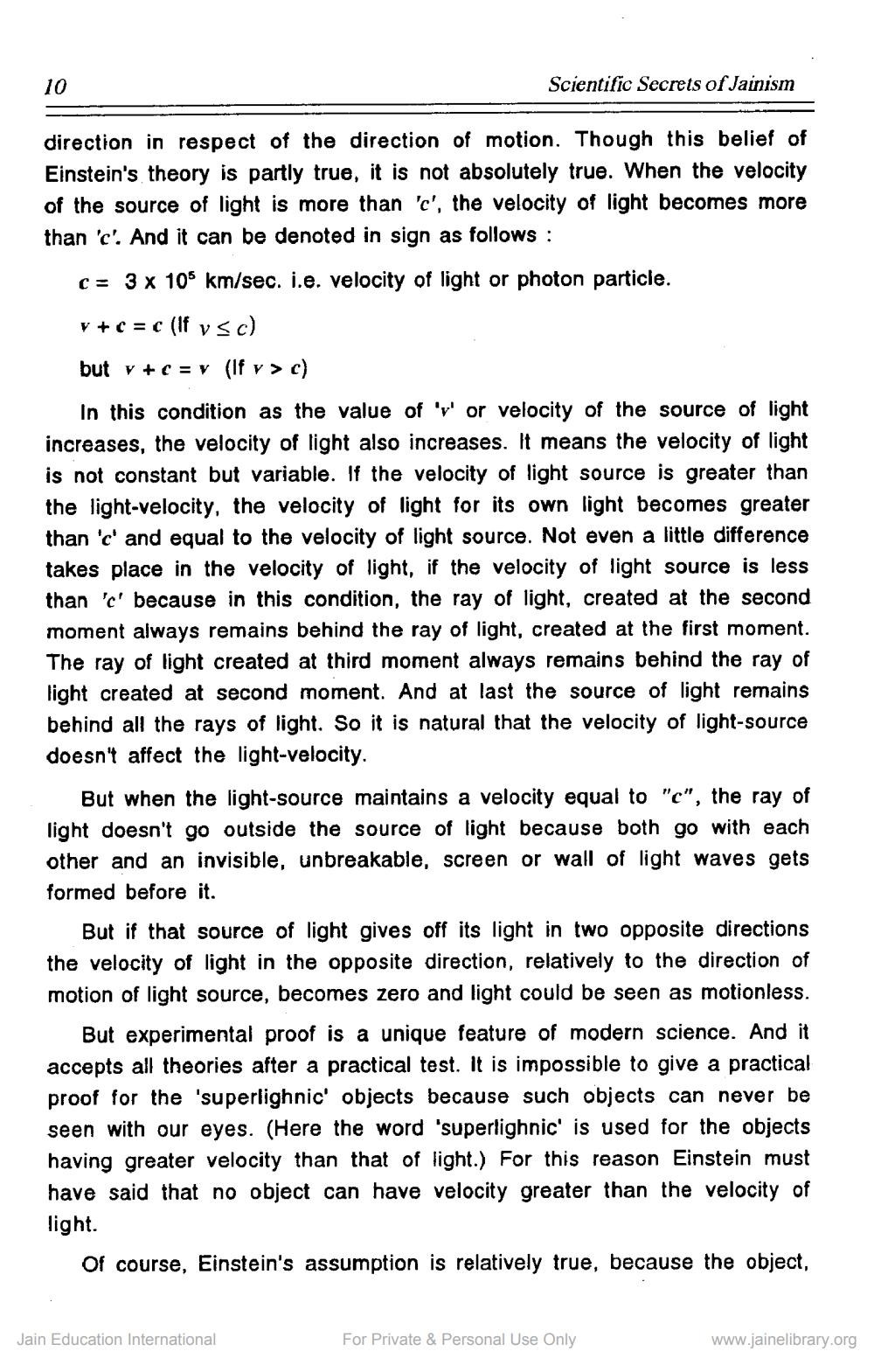________________
10
Scientific Secrets of Jainism
direction in respect of the direction of motion. Though this belief of Einstein's theory is partly true, it is not absolutely true. When the velocity of the source of light is more than 'c', the velocity of light becomes more than 'c'. And it can be denoted in sign as follows :
c= 3 x 105 km/sec. i.e. velocity of light or photon particle. v + c = c (lf vsc) but v + c = v (lf v > c) In this condition as the value of '
vor velocity of the source of light increases, the velocity of light also increases. It means the velocity of light is not constant but variable. If the velocity of light source is greater than the light-velocity, the velocity of light for its own light becomes greater than 'c' and equal to the velocity of light source. Not even a little difference takes place in the velocity of light, if the velocity of light source is less than 'c' because in this condition, the ray of light, created at the second moment always remains behind the ray of light, created at the first moment. The ray of light created at third moment always remains behind the ray of light created at second moment. And at last the source of light remains behind all the rays of light. So it is natural that the velocity of light-source doesn't affect the light-velocity.
But when the light-source maintains a velocity equal to "c", the ray of light doesn't go outside the source of light because both go with each other and an invisible, unbreakable, screen or wall of light waves gets formed before it.
But if that source of light gives off its light in two opposite directions the velocity of light in the opposite direction, relatively to the direction of motion of light source, becomes zero and light could be seen as motionless.
But experimental proof is a unique feature of modern science. And it accepts all theories after a practical test. It is impossible to give a practical proof for the 'superlighnic' objects because such objects can never be seen with our eyes. (Here the word 'superlighnic' is used for the objects having greater velocity than that of light.) For this reason Einstein must have said that no object can have velocity greater than the velocity of light.
Of course, Einstein's assumption is relatively true, because the object,
Jain Education International
For Private & Personal Use Only
www.jainelibrary.org




